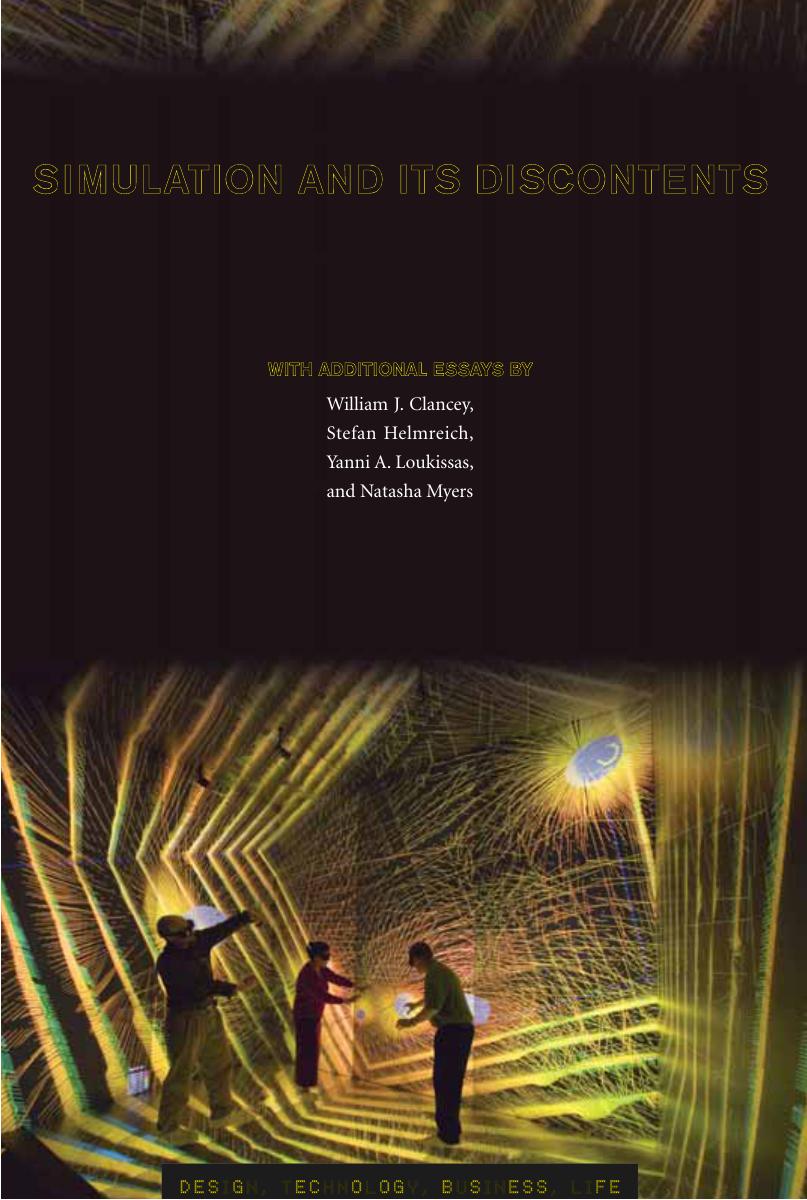Simulation and Its Discontents by Sherry Turkle

Author:Sherry Turkle
Language: eng
Format: epub, pdf
ISBN: 9780262254847
Publisher: MIT Press
Published: 2009-03-14T16:00:00+00:00
SITES OF SIMULATION: CASE STUDIES
Outer Space and Undersea
BECOMING A ROVER
William J. Clancey
It is 3:13 a.m. at Gusev Crater on Mars, and the Mars Exploration Rover (MER) called Spirit is powered down for the night. The team of scientists “working Gusev” lives on Mars time, but, with some luck, they are fast sleep in California.1 The MER is a remotely operated vehicle and it is not the only one exploring Mars at this time. On nearly the opposite side of the planet at Meridiani Planum, another MER called Opportunity photographs the Martian surface and undertakes the analysis of minerals. The thirty-seven scientists “working Meridiani” are ensconced in a fifth-floor meeting room at the Jet Propulsion Laboratory in Pasadena. With my background in robotics and artificial intelligence, I am living as if on Mars with this team as I attempt to document its mission. It is a bright February afternoon, but we sit in a room darkened by heavy black shades. We are with our rover. We count time by the number of sols, Mars rotations, since our rover landed. Today is sol 25, M25.2
The first meeting of sol 25 includes short lectures by a half-dozen scientists. Speaking with wireless microphones, they display scores of colorful photographs and charts with titles such as “Locations and Things to Do for Mineralogy.” The MER scientists sit in clusters, organized into four Science Theme Groups and a Long-Term Planning Group. Later in the sol, the Science Operations Working Group polls the thematic groups for what they want the rover to do, what commands they want to give to the robotic vehicle. These commands will be converted into eight-hour-long software instructions that will program the rover’s actions. Before the end of the day, the scientists will settle on one set of instructions, known as a sequence. This sequence will be communicated to an engineering team who will prepare computer code for the rover’s next-day exploration of Mars. An end-of-sol meeting will review daily progress, next-day plans, and the group’s long-term goals.
Today, on sol 25, a month into the Opportunity’s mission, the Chair of the Science Operations Working Group gives a short lecture about the Rock Abrasion Tool, the RAT, which serves as a geologist’s hammer, scraping a circle into a hard surface. The speaker warns the group against indiscriminate data gathering with the RAT, letting their curiosity bypass the discipline of scientific hypothesis testing. “As we think about how we are going to approach this outcrop, our thinking and our discussion should be very much based on hypothesis testing.… Don’t say ‘let’s RAT here’ to reveal this, and ‘let’s RAT here’ to reveal that; let’s talk it through in terms of the specific scientific hypotheses that we’re trying to test.”
Why is it necessary to lecture these scientists—experienced in field exploration, competitively selected to be members of the MER Science Team, many of them having worked on multiple missions before this one—on how to do science? Working with the remote-controlled rover changes the practice of field science
Download
Simulation and Its Discontents by Sherry Turkle.pdf
This site does not store any files on its server. We only index and link to content provided by other sites. Please contact the content providers to delete copyright contents if any and email us, we'll remove relevant links or contents immediately.
| AI & Machine Learning | Bioinformatics |
| Computer Simulation | Cybernetics |
| Human-Computer Interaction | Information Theory |
| Robotics | Systems Analysis & Design |
Algorithms of the Intelligent Web by Haralambos Marmanis;Dmitry Babenko(16319)
Jquery UI in Action : Master the concepts Of Jquery UI: A Step By Step Approach by ANMOL GOYAL(9443)
Test-Driven Development with Java by Alan Mellor(7739)
Data Augmentation with Python by Duc Haba(7615)
Principles of Data Fabric by Sonia Mezzetta(7383)
Learn Blender Simulations the Right Way by Stephen Pearson(7296)
Microservices with Spring Boot 3 and Spring Cloud by Magnus Larsson(7143)
Hadoop in Practice by Alex Holmes(6601)
RPA Solution Architect's Handbook by Sachin Sahgal(6519)
The Infinite Retina by Robert Scoble Irena Cronin(6220)
Big Data Analysis with Python by Ivan Marin(5941)
Life 3.0: Being Human in the Age of Artificial Intelligence by Tegmark Max(5520)
Pretrain Vision and Large Language Models in Python by Emily Webber(4898)
Infrastructure as Code for Beginners by Russ McKendrick(4658)
Functional Programming in JavaScript by Mantyla Dan(4445)
WordPress Plugin Development Cookbook by Yannick Lefebvre(4389)
The Age of Surveillance Capitalism by Shoshana Zuboff(4253)
Embracing Microservices Design by Ovais Mehboob Ahmed Khan Nabil Siddiqui and Timothy Oleson(4149)
Applied Machine Learning for Healthcare and Life Sciences Using AWS by Ujjwal Ratan(4137)
